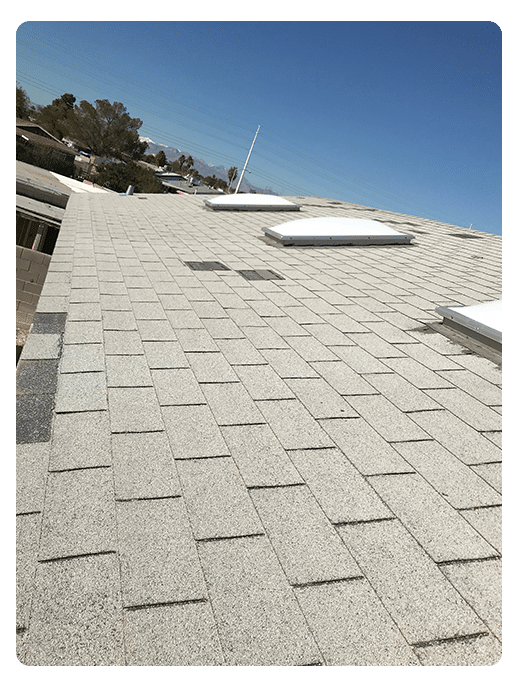When it comes to choosing the right color scheme for your home’s exterior, there are many factors that must be taken into consideration.
It is important to create a pleasing aesthetic while also ensuring that the colors chosen bring out the best features of the house and complement its surroundings.
This article will provide helpful tips on how to choose an appropriate color scheme for a home’s exterior.
From selecting complementary shades to considering seasonal changes, this guide offers valuable insight into creating an aesthetically-pleasing color palette for one’s residence.
Furthermore, understanding what style works best with certain tones can help ensure that all elements come together in harmony and make a statement about the homeowner’s taste and style.
With these guidelines in mind, readers will be able to make informed decisions when deciding which colors work best for their particular situation.
Selecting Complementary Shades
When choosing a color scheme for your home’s exterior, it is important to consider the complementary shades that will bring out the best features.
Creating an aesthetically pleasing design requires careful thought and consideration of both natural elements found in your environment as well as those colors you prefer.
The key to creating a successful palette is to select colors that complement each other rather than clash.
For example, if you are looking to create a classic look, you may want to opt for muted tones such as blues or greens with white accents while more contemporary homes can benefit from brighter hues like yellows and oranges.
It is also possible to mix and match different colors within one facade, adding visual interest and texture while still remaining unified in its overall appearance.

Additionally, selecting coordinating trim colors can help tie all the pieces together and give your house an attractive finished feel.
Considering Seasonal Changes
Seasonal changes can also be taken into account when choosing a color scheme for the home’s exterior.
While some colors may look great during warmer months, they could become too muted or washed out once winter arrives and daylight hours are reduced. Therefore, it is important to consider how each hue will appear in different types of lighting throughout the year.
Additionally, certain shades work better with specific materials such as brick, siding and stucco which should all be taken into consideration when selecting a color palette. Choosing an appropriate combination of hues that reflect both personal style and seasonality can prove challenging but can create beautiful results if done properly.
When researching potential combinations, homeowners should take note of what nearby homes have used successfully so that their own selection stands out without looking jarring against its surroundings. The right balance between unique character and harmonious fit within its environment can lead to a stunning result while ensuring satisfaction over the long-term.
Examining Existing Features
It is important to consider the existing features of your home when choosing a color scheme for its exterior.
Existing elements such as roofing, trim, and windows can help you decide which colors will work best with your house.
For example, if you have light-colored brick or siding on your home, using darker shades of paint may provide contrast and create visual interest.
If there are multiple architectural styles in close proximity to each other, lighter tones can be used to ensure all buildings blend together harmoniously.
The environment surrounding the house should also be taken into account when selecting an appropriate color palette for your home’s exterior.
Colors that complement nature’s hues will make your property appear more inviting and visually appealing.
Darker tones can be used to accentuate natural features like trees and foliage while brighter shades may bring out details such as window frames or columns.
Ultimately, finding the perfect balance between existing features and environmental influences is key to creating a successful exterior color scheme for any residence.
Understanding Color Psychology
The first step to finding the right color scheme for your home’s exterior is to take a look at existing features, such as furniture and landscaping. You can use these elements to determine which colors are already present in your home’s current design.
By understanding what you currently have, you will be able to choose complementary hues that add vibrancy without feeling overwhelming or out of place.
Next, it is important to consider the psychology behind each hue. Colors evoke different emotions and feelings in us; understanding how these tones make people feel can help inform your decision-making process when selecting a new color palette for your home’s exterior.
Warmer hues like red and orange tend to create an energizing atmosphere while cooler shades like blue and green bring about calming effects. Neutral colors provide balance and blend nicely with any type of decorating style.
Ultimately, choosing a color scheme for your home should reflect not only its overall aesthetic but also invoke the desired emotional response from those who enter.
Balancing Bold And Neutral
When choosing a color scheme for your home’s exterior, it is important to consider both bold and neutral colors.
A bright or bold paint color can help give the house character, while neutrals are often considered timeless classics that can provide a sense of stability to the overall appearance.
When pairing them together, there are several approaches you can take.
One option is to use two complementary colors—one neutral and one bold—with the more muted hue on larger surfaces such as walls and door frames, allowing the brighter accent tones to make a splash in smaller areas like shutters and trim.
Alternatively, you could opt for a monochromatic look by using different shades of either a bright or neutral color throughout the entire space.
It all depends on what kind of atmosphere you wish to create with your design choices.
With careful thought given to balance between boldness and neutrality, you will be able to find just the right combination for your home’s exterior that reflects your personal style and tastes.
Incorporating Accent Colors
As you move onto the next step of choosing a color scheme for your home’s exterior, it is essential to incorporate an accent color into your design.
An accent color can add visual interest and depth to any space by creating contrast within the rest of the palette.
When selecting an accent hue, consider using a complementary or analogous shade to create balance.
You may also want to choose a paint with different sheen levels that will help bring out the individual colors in your chosen palette while maintaining harmony between them.
When considering which hues work best together, remember that there are no hard-and-fast rules when it comes to aesthetic preferences –it’s all about personal taste!
However, if you feel overwhelmed or uncertain about making decisions on your own, seeking advice from a professional designer might be beneficial as they can provide valuable insight and guidance.
Ultimately, no matter what combination of colors you decide upon, make sure that it speaks to who you are as an individual and reflects the look and style that appeals most to you.

Utilizing Color Schemes To Make A Statement
The use of color schemes for the exterior of a home can play an important role in making a statement and adding visual interest.
Color combinations should be carefully chosen to ensure that they create harmony rather than discord, as well as draw attention to any unique features or architectural details.
To begin creating a color scheme, consider starting with two colors: one neutral base tone such as white or gray, and one accent hue.
Neutral colors serve to highlight the brighter hues while allowing them to take center stage.
Accent colors can then be used sparingly on doors, window trim, shutters or other accents.
When using multiple colors, choose those that complement each other – analogous colors are often successful here due to their ability to blend harmoniously together without becoming overwhelming.
Additionally, darker shades will also help add depth and contrast when used strategically around windows and entryways.
By considering how different colors interact with each other, homeowners have the opportunity to make bold statements through their choice of color schemes for the outside of their homes.
With careful consideration and thoughtful planning, these choices can bring life and vibrancy into outdoor spaces for years to come.
Conclusion
It is important to consider all of the factors when selecting a color scheme for your home’s exterior.
Choosing complementary shades, taking into account seasonal changes and existing features, as well as understanding how colors can evoke certain emotions will help create an attractive palette that reflects your personal style.
A balanced combination of bold and neutral tones, with accent colors strategically placed throughout, allows you to make a statement while still allowing the architecture itself to stand out.
With careful consideration of each component in the process, you can pick the perfect color scheme for your home’s exterior.


